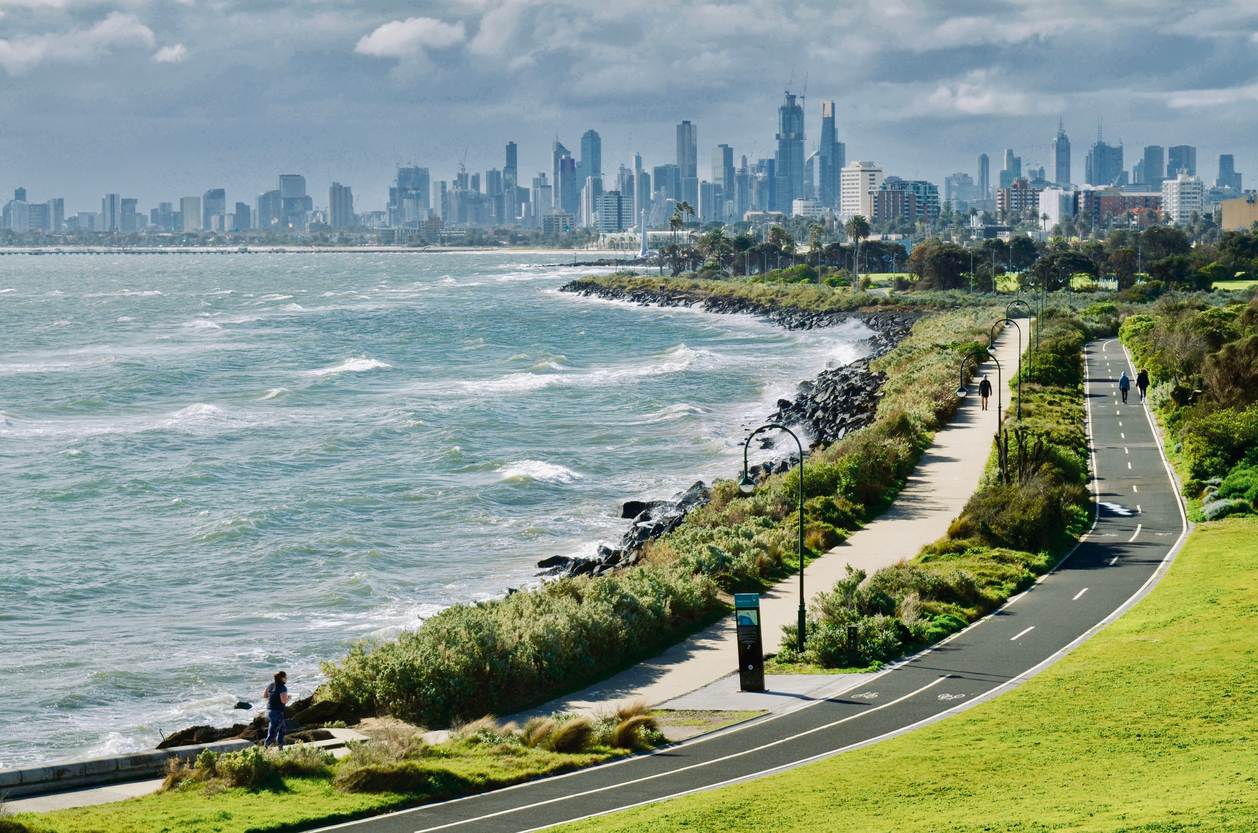Melbourne and VIC property market update - February 2021
Against a backdrop of surging national home values Melbourne property values continue to stage a comeback, building on the progress made in January.
CoreLogic’s Home Value Index, reports that national property prices grew +2.1 per cent over February; the largest month-on-month growth in seventeen years.
Property values in Melbourne advanced at the same rate, +2.1% over the month, meaning that they have recouped the losses encountered in 2020.
Regional Victorian markets are on a similar trajectory and actually outperformed metro markets overall, up +2.6 per cent over the month.
Overall the annual growth trend for CoreLogic’s combined regional index is +9.4 per cent higher than the combined capital city index, which only grew +2.6 per cent over the same timeframe.
Now let's take a closer look at what’s happened in the Melbourne and Victorian property markets over February 2021.
Melbourne market update

Houses
$829,509
Monthly change: +2.4%
Units
$582,833
Monthly change: +1.2%
Overall property values in Melbourne jumped +2.1 per cent over the month for +3.5 per cent growth over the quarter. The trials of 2020 - with two extended lockdowns - do still cast a shadow over the annual YTD performance of the city, leaving it at a negative -1.3 percent.
The median property price of $717,767 is the third most expensive value nationally, with only Sydney and Canberra more costly.
When we drill down to look at house and units, values for houses rose significantly (+2.4 per cent) over February, double the monthly change for units (+1.2 per cent). CoreLogic highlights this as a trend that has emerged over the pandemic, with the ‘weaker performance of units relative to detached housing’.
The Real Estate Institute of Victoria (REIV) reports that, ‘the median house price in Victoria has recorded its largest increase since 2000’, with ‘houses in Melbourne surpassing a median value of $900,000’ for the first time. They also segmented the market by the median house price/number of bedrooms, based on data collected in the December 2020 quarter:
2 Bedrooms - $915,000
3 Bedrooms - $782,500
4 Bedrooms - $955,000
The median unit price using the same data for metro Melbourne was:
1 Bedroom - $394,000
2 Bedrooms - $600,000
3 Bedrooms - $788,000
The Real Estate Institute of Victoria (REIV) reports that, ‘the median house price in Victoria has recorded its largest increase since 2000’
Another sign that life is returning to Melbourne’s property market, CoreLogic reports that final auction clearance rates are improving. In the final week of February the rate was up to 77.4 per cent, up from 70.6 per cent the previous week. This is still lower than the same week last year, where the final clearance rate was 76.1 per cent - but the trend is positive.
Domain data on the three-month average median for houses sold at auction was $1,010,333 in February, up from $909,100 for the same period last year, displaying a similar course.
Regional Victoria market update
Houses
$459,787
Monthly change: +2.6%
Units
$323,391
Monthly change: +2.8%
As we mentioned demand for regional property has been a very obvious trend of the COVID era. With a median property value of $436,154 in regional Victoria, you get considerably more for your money compared to a median property value of $717,767 in metro Melbourne. But price is only part of the story, lifestyle factors and the work from home phenomenon have all been driving factors.
Regional Victorian property is no exception, and has actually led the way nationally over February, up +2.6 per cent overall. Looking back over the past three months it has advanced +6.2 per cent and +8.3 per cent over the year to date (YTD).
Melvourne and regional Victoria rental market update
SQM Research reports that Melbourne’s vacancy rate dropped to 4.4 per cent over January, down from a high of 4.7 per cent in December 2020. Contrast this with a figure of 2.1 per cent in January 2020 before the pandemic hit, though it is still the highest vacancy rate for any of the capital cities.
Asking rents over February in Melbourne are however still in decline, down falling by 0.1 per cent (houses) and 0.4 per cent (units). This is -7.3 per cent and -11.2 per cent lower respectively than this time last year.
SQM Research reports that Melbourne’s vacancy rate dropped to 4.4 per cent over January, down from a high of 4.7 per cent in December 2020.
They point out that vacancy rates are highest in the Melbourne CBD, a reality that is likely to continue if international borders remain closed. For this reason they believe 2021 will remain, ‘a tenant’s market in the inner cities but will also very much remain a landlord’s market for regional Australia’.
The outlook for 2021
After a year and more of a global pandemic and there eventually positive signs emerging, with vaccines beginning to be rolled out in multiple locations - including Australia. This is a key event in the fight to return society to normality and restart stalled economies. Most observers believe 2021 bodes well, though there is still uncertainty over the efficacy of vaccines against emerging virus variants.
Let’s recap what financial houses and local property analysts are currently thinking.
Pent up demand has Westpac projecting that national dwelling values will increase 20 per cent over the next two years. They believe Melbourne property values will grow 8 per cent in 202 and 10 per cent in 2022.
CoreLogic’s Tim Lawless highlights tight supply conditions, with housing inventory currently at record lows for this time of the year, with continued high buyer demand likely to propel prices to record highs. The obvious downside is affordability as household incomes are, ‘expected to remain subdued’ making it a challenge for buyers wanting to get on the ladder in our two largest cities.
Meanwhile property analysts and investor Michael Yardeny is largely bullish for Melbourne property, partially due to the HomeBuilder grant, historically low interest rates and new stamp duty concessions. These measures will help first home buyers get into the market.








